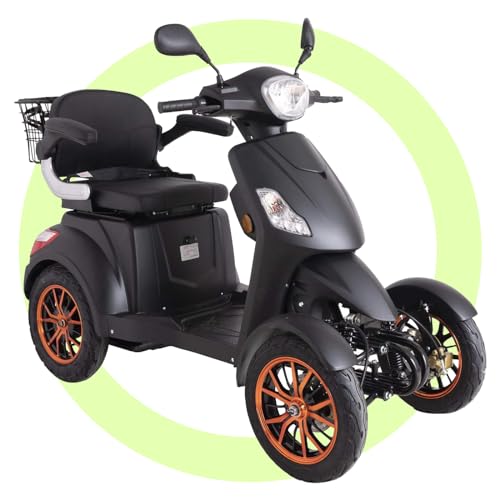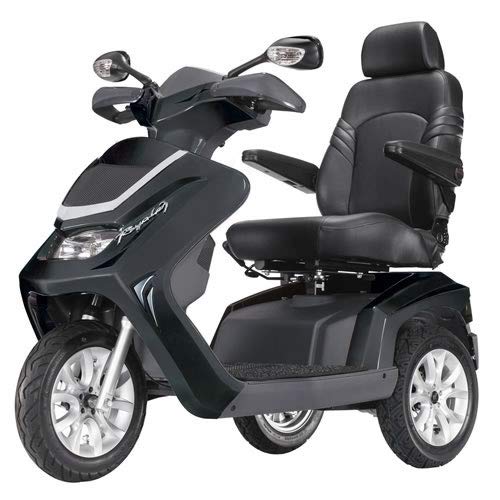10 Basics About Electric Assistive Technology You Didn't Learn In Scho…
페이지 정보

본문
 electric mobility scooter adult Assistive Technology
electric mobility scooter adult Assistive TechnologyMore than one billion people require aidive devices and that number is set to double by 2030. These devices can be store purchased, modified, such as adding tennis balls to a walker; or even made to order.
Assistive technology can include ergonomic kitchen tools such as OXO Good Grip and keyboards that are specialized. Other advanced devices could be considered, like screen magnifiers.
Functional electrical stimulation
Functional electrical stimulation (FES), also known as functional electrical stimulation is a method that relies on tiny 3 wheel electric mobility scooters charges to muscles that are either paralyzed or weak due to an injury such as Multiple Sclerosis or stroke. The electrical impulses induce the muscle to move normally. This treatment is able to improve your movement, such as walking or grasping. It can also help improve the bowel and bladder, as well as reduce the risk for pressure sores.
Electrical stimulation can elicit responses in excitable cells such as neurons, and it has been used for a long time to treat a variety of conditions. Examples include cochlear implants to help with hearing, respiration assisters, and systems to assist people void their bladder. It may also help to reduce tremors caused due to Parkinson's disease. The electrical stimulation can be delivered through electrodes that are implanted inside the body or placed on the surface of the skin without perforating the skin. These electrodes are known as percutaneous electrodes that are non-invasive.
The intensity of stimulation can be altered to achieve different outcomes. For instance, the intensity of the stimulation can affect the type of nerve fibers recruited and the fibers that are closer to the electrode being targeted first. Another factor to consider is the duration of the stimulation. This influences the length of time that the muscle is activated, which can influence the speed at which fatigue occurs.
FES is not for all. It can be extremely efficient in helping someone suffering from an injury to their spine recover their functional movements. It's not recommended for people who have uncontrolled epilepsy or a cancerous lesion that covers the the skin to be stimulated, or are hypersensitive to the sensation of the stimulation. It is not recommended for people who suffer from a poor skin condition, as the self-adhesive electrodes can lead to irritation or pressure injury.
Power chairs
Power chairs are a type of motorized chair that uses an adult electric mobility scooter battery and motor https://www.darknesstr.com/portableelectricmobilityscooter571670 to assist with mobility. They can be controlled using an electronic joystick or other control systems. They offer more independence for those who are unable to walk. They also permit users to travel further distances without relying on others for help. Additionally they can be customized and adjusted to meet the specific needs of users.
There are a variety of power chairs, including the portable, indoor/outdoor and middle-sized. Portable power chairs are incredibly lightweight and fold down to fit into small spaces. These are perfect for home use, or for short distances. Power wheelchairs that are mid-sized offer an ideal balance of mobility scooters electric and durability. Outdoor and indoor powerchairs are designed for outdoor use but they can also be adjusted for indoor environments. Indoor/outdoor chairs may have grippy tires to assist with maneuvers over kerbs and they could also have a kerb-climber.
For those who have physical limitations assistive technology is a vital tool. It can range from voice recognition software that is available in stores to specialized seating that enhances comfort and independence. The most advanced assistive technology is usually more expensive, but it comes with advanced features and capabilities for customization that can be ideal for a variety of user requirements.
It is best to seek advice from a doctor or a physical therapist to find the ideal solution. They can suggest the ideal device for you, and help you select the correct size and demonstrate how to use it. They can also assist you to choose accessories and integrate the device into your daily routine.
Railings
Sometimes referred to as handrails, railings are placed diagonally on stairs or ramps to offer an effective grasping point for people who are on the slope. Most building codes contain regulations regarding height and spacing for handrails to help prevent accidents. Handrails can be designed to a graspable shape or constructed from materials that are easy to grip. Handrails that are functional and meet ADA regulations have an opening for fingers on one side or both. They must also be strong enough to stand up to 200 pounds of force.
Handrails can also offer tactile guidance for individuals with visual impairments to assist them in navigating the stairs. By running their hands along the railing allows people to feel the number of steps, curves or landings. Handrails can be used to guide people away from danger in emergency situations.
Electronic pillboxes
The electronic pillbox was designed to assist seniors in remembering to take their medications. It has triple alarms and audio and visual reminders to ensure that seniors take their medications at the appropriate times. This technology can reduce medication errors that are the leading cause of death among seniors. It can also help to stop fatal overdoses.
The device consists of a medicine container that comes with different compartments for daily use and weekday times as well as a battery-powered sensor that has an international mobile data connection as well as speakers and LEDs to give audio and visual notifications when the pills are due. This device is designed for patients who are taking multiple medications, vitamin supplements or both and caregivers at hospitals and retirement homes.
In the simplest model the pillbox sensor is built inside the lid and is able to monitor the status of each subcompartment lid. The sensors are triggered whenever the lid is opened and a signal sent to the microcontroller. The signal is timestamped and stored in the circular memory cache of the microcontroller 18LF252.
 The system is designed to be reprogrammable by using an external Arduino board, which manages every component. The Arduino board is responsible for emitting light and sound signals for the pillbox to let the senior know that a pill needs to be taken and wirelessly delivering the message to the caregivers. The acoustic signals as well as the light will remain on for a brief period of time, and then bleep every 10 seconds until the senior has a response. The pillbox will then start dispensing the pill and the internal speakers and LEDs will turn off.
The system is designed to be reprogrammable by using an external Arduino board, which manages every component. The Arduino board is responsible for emitting light and sound signals for the pillbox to let the senior know that a pill needs to be taken and wirelessly delivering the message to the caregivers. The acoustic signals as well as the light will remain on for a brief period of time, and then bleep every 10 seconds until the senior has a response. The pillbox will then start dispensing the pill and the internal speakers and LEDs will turn off.- 이전글12 Companies That Are Leading The Way In Disabled Scooters 25.01.31
- 다음글Introduction To The Intermediate Guide In Assistive Mobility 25.01.31
댓글목록
등록된 댓글이 없습니다.
